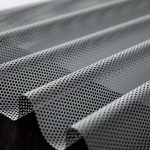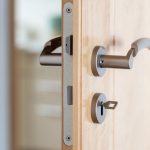Just in case you haven’t come across a proper definition on shaft power meter, we’ve decided to begin this article with one: A shaft power meter is a digital measuring system which incorporates the use of a laser beam which detects shaft torque, transferred power, and shaft RPM. The reason why this shaft power measurement system has become so popular is because it provides high accuracy and long- term stability.
Additionally, it transmits all the data that has been measured via satellite from the ship to the shore where operation management can figure out and determine the most economical operating modes for the propulsion system and the ships engine.
Some of the main benefits of an utterly reliable shaft power measurement system include: continuously accurate measurements, reliable operation, low maintenance, sturdy construction, the ability to install sensing elements in hazardous areas, great value for money, control and monitoring system integration, easy usage, great readability and display of graphics and suitability for any shaft diameter. There is no need to wonder why this is one of the most sought after systems for ships, the uses and benefits really speak for themselves.

Shaft power measurement systems are used for three main reasons, the first reason is so that the shaft RPM can be measured and read, the second reason is to measure the torsional angle between the two cuts of the shaft and the torque, and the third main reason is to measure and read the power transferred by the shaft. This information is displayed on analogue instruments, digital form on LCD or both analogue and digital as on a computer monitor. If you would like to delve into more in-depth information on measurements for the shaft you can click here.
So how come that this technology is now used on ships? The first tests were conducted in 1999 on two separate vessels on two separate occasions. These thorough tests covered a wide range of factors which included continuous logging of the propeller shafts RPM, torque, power, and the total amount of energy transferred to the propellers. These figures would then be compared against the total amount of fuel that was consumed in order to improve and optimize the operation of these ships. Both of these tests were conducted and executed perfectly with excellent and promising results.
Shaft power measurement systems have ever since been installed and used on a daily basis for the needs of a wide range of different ships. Some of these types of ships include passenger vessels, survey vessels, tankers, cargo ships, container ships, offshore vessels, and ships with both one and two shafts or propellers. There are a lot of reasons why ships use this system which include: optimizing the ship’s overall performance, reducing fuel consumption, reducing NOx consumption, saving money on maintenance by minimizing downtime. This kind of shaft power measurement system will help ship owners monitor the propeller shafts and thrusters over periods of time, which in turn will allow them to take preventative maintenance actions and corrective actions as well.
There is no doubt why these systems are superior. They offer a wide range of benefits to ship owners – all of which have been listed above. If you are a ship owner and are interested in owning this technology then you can easily find a manufacturer near you or you can do a quick online search where you can read more information as well as browse, compare prices, and purchase these systems online.





Comments are closed.